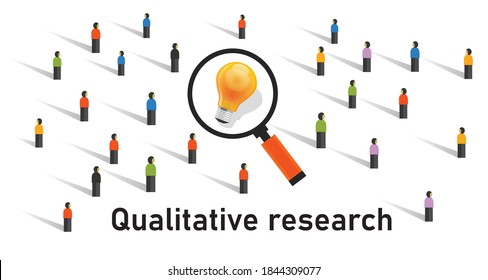
In order to successfully respond to an Extended Essay's research question, a form of research must be carried out. For convenience, research can be divided into two types, primary and secondary:
Primary research is a type of research that requires the researcher to participate directly in the data-gathering process. In primary research, the researcher does not depend on already existing data, rather he or she collects first-hand information which serves as research materials for the systematic investigation.
directly in the data-gathering process. In primary research, the researcher does not depend on already existing data, rather he or she collects first-hand information which serves as research materials for the systematic investigation.
Secondary research is a type of research approach in which the researcher relies solely on existing research materials rather than gather data directly for research. This research approach is less expensive and time-efficient unlike primary research..
a. Primary research (any data produced by you)
• Surveys
• Questionnaires
• Interviews
• Experiments
• Designs (and their testing)
• Models (and their testing)
• Measurements
• Field Studies
b. Secondary research (any analysis of pre-existing data by you)
• Literature review of secondary source material

Data can be said to be valid if it provides an accurate picture of the reality it is referring to. When it comes to research, often one would seek either a total sample size or a random selection of a broad enough cross-section of that group.
EXAMPLE
|
For example, if I am trying to determine how useful 181 students find the Theory of Knowledge classes to their wider IB studies, I could: a. Survey the entire IB1 group. b. Place the names of all students in a hat and select a representative sample from it (say 50 for a group of 200 students). c. Allow a computer programme to generate a random list of so names that I could then survey. |
|
All of these examples above would yield "valid" data pertaining to my research focus. Why? |
Option A
would be fully representative and provide the complete view; however, this may not work when the group in question is in the thousands or millions, or where time is not available to survey everyone.
Options B and C
work also as they provide a wide enough sample size from a random selection (thus eliminating any bias that would emerge if I interviewed say just one class who may have had bad experiences with TOK).
However, some research may not always accurately reflect the reality of the group being studied. For example, participants may not always respond truthfully to an interviewer's questions for various reasons (for example, they feel embarrassed or shy or they want to project a particular image).

If you use the same method as a previous researcher,and get similarly consistent results, then the method you've used is considered "reliable". This may often mean repeating the exact same questionnaire used by another researcher with all members of the chosen sample, or relying on a method that many other experts in the field employ for similar investigations.

It is vital, in all instances, that a consideration of the value and limitations of the selected research is offered as it, more than anything, demonstrates a balanced and measured approach to data that is a requisite feature of all good academic writing.

There are two types of data that we usually end up with as a result of our primary research. Each have their advantages and disadvantages.
Quantitative data: Is information that is represented in number form or something that can  be measured. For example, data on user preferences with regard to smartphone apps or distances achieved from use of varying parabolic curves can be represented as percentages, tables, bar charts and so on.
be measured. For example, data on user preferences with regard to smartphone apps or distances achieved from use of varying parabolic curves can be represented as percentages, tables, bar charts and so on.
Qualitative data: Usually takes the form of descriptions or narratives that can reveal things  such as people's feelings about a particular subject or event, people's emotional states or a wide array of opinions. For example, qualitative data can reveal what people think about a particular work of art or a recent governmental policy. This type of data is usually recorded in the form of words.
such as people's feelings about a particular subject or event, people's emotional states or a wide array of opinions. For example, qualitative data can reveal what people think about a particular work of art or a recent governmental policy. This type of data is usually recorded in the form of words.

A questionnaire is a means of collecting information from a list of pre-set questions.  It is a useful tool for conducting a social survey because it can be used to gather information from a large number of people. A survey can be a series of questions printed on a sheet of paper or completed online using one of the many online survey-making tools (for example, Survey Monkey, Zoomerang or SurveyGizmo).
It is a useful tool for conducting a social survey because it can be used to gather information from a large number of people. A survey can be a series of questions printed on a sheet of paper or completed online using one of the many online survey-making tools (for example, Survey Monkey, Zoomerang or SurveyGizmo).
Closed questionnaires
In a closed questionnaire, the interviewee is asked a series of pre-set questions with a limited (or restricted) number of multiple-choice answers.
Open-ended questionnaires
In an open-ended questionnaire the interviewee is asked a series of pre-set questions for which they are able to dictate their own answers.
Questionnaires carried out by an interviewer
Interviews are often a useful way to generate research material. An interviewer must have pre-prepared a series of questions to ask, however, the interviewer can ask follow-up questions that arise from responses given. Respondents dictate their own answers to questions posed.
Experiments are a particularly strong means of ascertaining whether a research hypothesis is in fact valid  and/or correct. Experiments are most often associated with Extended Essays taken in Group 4 subjects, although this does not mean that they are not possible in other areas such as geography or economics where experimental models can be developed and used to test hypotheses (for example, use of the Keynesian model of economic growth to ascertain the long-run aggregate supply curve or determining recession cycles based on the skyscraper theory). Although there are a near infinite number of experiments one could conduct, certain basic rules apply to all of them.
and/or correct. Experiments are most often associated with Extended Essays taken in Group 4 subjects, although this does not mean that they are not possible in other areas such as geography or economics where experimental models can be developed and used to test hypotheses (for example, use of the Keynesian model of economic growth to ascertain the long-run aggregate supply curve or determining recession cycles based on the skyscraper theory). Although there are a near infinite number of experiments one could conduct, certain basic rules apply to all of them.
When carrying out research, it is very important to consider
Informed consent: You should, as a matter of course, tell participants what they are doing and why they are doing it.
How you report your findings: You should always record and report your findings accurately and honestly.
Harm: Your research should always consider the physical, social and mental well-being of your participants and they should not be harmed by the research conducted.
Anonymity: You should, as a matter of course, change the name of participants in order to protect their privacy.